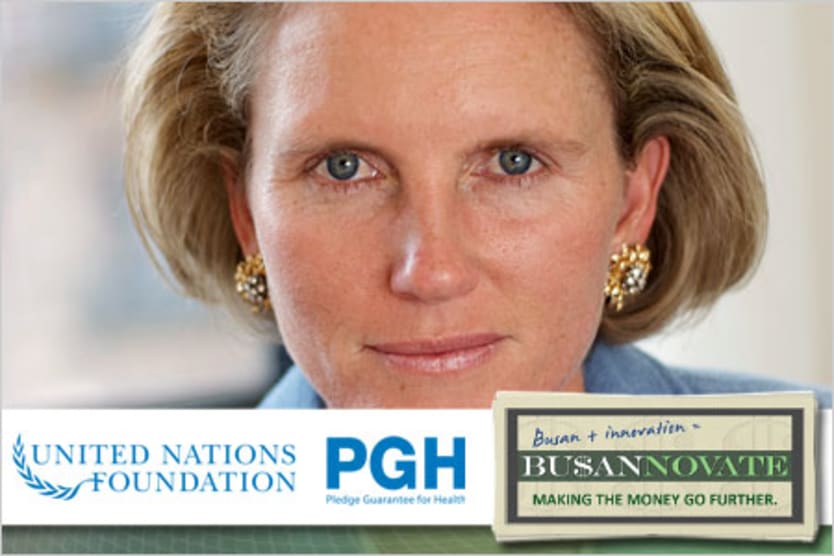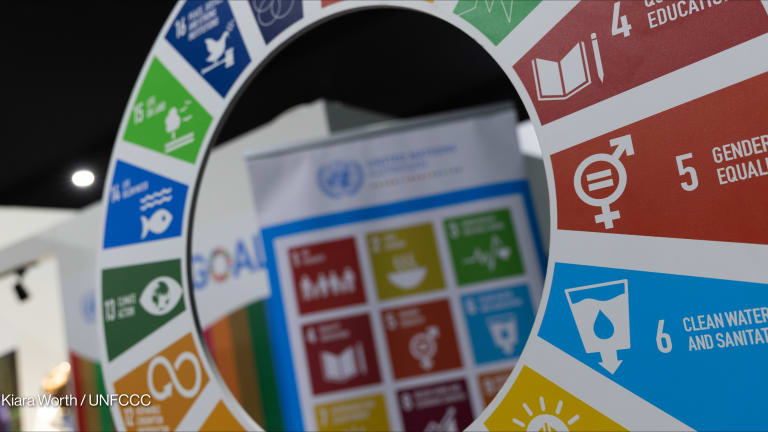
Earlier this year, I visited a women’s savings group in Darshour, Egypt, a rural community a few hours outside of Cairo. Every month, the women – almost all of whom are illiterate – come together to put their hard-saved coins and bills into a lock-box and carefully enter the amount on a worn ledger. One woman proudly told me how through this savings group, she had accumulated enough money to purchase a washing machine for her family. Her husband was stunned, her children were delighted, and she has freed up hours of her day to start a business.
This savings group, and millions of others like it, is a small part of an essential trend in development of leveraging new resources for poverty alleviation. As delegates meeting in Busan to discuss aid effectiveness noted, handouts from rich countries to poor countries are a shrinking part of the development picture. Indeed, according to the OECD, private capital flows from Development Assistance Committee members to developing countries between 2000 and 2009 were more than double bilateral official development assistance (57 percent versus 27 percent). Private philanthropy, double-bottom line investing, and the mobilization of local resources are also playing a bigger role.
Deploying these multiple financing streams effectively, however, is a formidable challenge.
One priority is leveraging people’s own resources – like the savings group in Darshour. For years, microfinance has been synonymous with microcredit. But microsavings could actually be a bigger lever of change. Creating better mechanisms than the “lock box” to allow low-income people to securely save small sums is a problem clearly in need of a solution. Branchless banking holds tremendous promise. In India, some 60,000 “business correspondents” are now at work, visiting rural villages to set up accounts and accept deposits. So far, they have set up 74 million accounts, bringing critical savings opportunities to the working poor.
Commitment accounts, which lock up a person’s funds until a goal amount is reached, also hold potential. Yale University economist Dean Karlan outlines the promise of these accounts in his recent book, “More Than Good Intentions.” Among those who opened a commitment account in one study in the Philippines, the average savings balance increased by 318 percent. These kinds of initiatives to help low-income people leverage their own resources are important drivers of development.
Mobile technology will also be an important part of the solution. In the financial sector, mobile money services allow anyone with a phone to save, send or receive money, making transactions easier, safer and cheaper. Kenya’s M-PESA is among the best-known such services. Its value is evident in the demand it has sparked. According to a recent working paper by scholars from Georgetown University and the Massachusetts Institute of Technology, less than four years after its 2007 launch, M-PESA had been adopted by more than two-thirds of Kenyan households, and more than 23,000 agents exchange M-PESA credits for cash.

Another example of mobile technology’s promise comes from a recent study by the Center for Global Development on a cash transfer program in Niger. Researchers randomly assigned some villages to receive monthly payments through a mobile service called Zap, while others got cash. Recipients of the mobile transfers were able to obtain their payments far more easily; they had to travel only to the nearest Zap agent instead of to central cash distribution points. The average difference was more than three kilometers round-trip.
Mobile technology can also boost aid effectiveness by combating corruption and ensuring that assistance reaches its intended beneficiaries. In 2009, NATO began a program to pay some Afghan police officers by mobile phone in order to avoid skimming by middlemen. As a U.S. Air Force officer told the New York Times last year, “The first time we did that, the policemen thought they had gotten a 36 percent pay raise.”
The benefits of mobile technology can be especially potent for women. According to a report published by the Cherie Blair Foundation for Women and the GSMA last year, 93 percent of women with mobile phones feel safer, 85 percent feel more independent, and 41 percent use their phones to boost income and business opportunities. But women lag far behind men in mobile phone ownership in the developing world. Closing this gap would improve the well-being of women and their families.
Another important technological advance is occurring in India, where Nandan Nilekani, co-founder and former CEO of Infosys, is leading a government effort to give every Indian a unique ID number.
“For a large section of India’s population, the inability to prove their identity is a reality which leads to their marginalization,” Nilekani writes in the Economist’s “The World in 2012.”
With a secure number, based on biometric data, people across India will have better access to public and private services, including bank accounts, money transfers and government assistance. Nilekani’s effort faces major technological and logistical hurdles, but the upside stands to be significant.
With such a large range of players and tools on today’s development landscape, traditional foreign assistance can no longer pretend to dominate the scene. It still has an important role, though: creating partnerships and using its convening power to coordinate and leverage the full array of public and private financing for development. The key is to deploy people’s own resources and innovative technological solutions for sustainable poverty reduction.
Want to read more about innovative financing for development? Check out Busannovate, a blog brought to you by Devex in partnership with the United Nations Foundation, and launched with a thought-provoking guest opinion by Nobel Peace Prize winner Muhammad Yunus.




